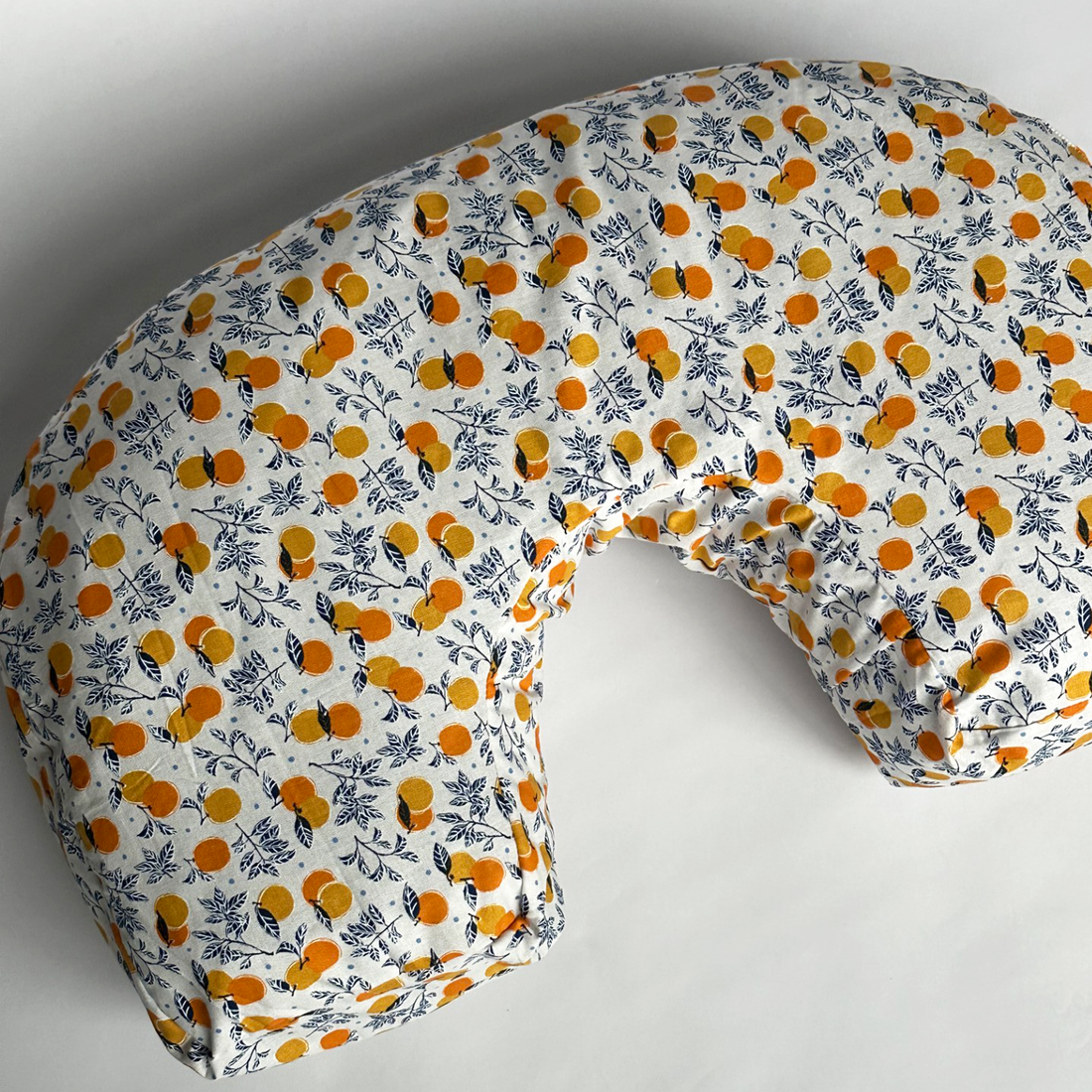
How to use a Nursing Pillow
Share
Using a nursing pillow can provide great support for both you and your baby while breastfeeding. Here’s a step-by-step guide on how to use one effectively. A nursing pillow creates more comfortable nursing sessions, a better experience for you and baby an exceptional nursing experience that supports both you and your baby.
1. Choose the right Position
There should be No Hunched or Crunched Shoulders
Position the pillow on your lap: Place the nursing pillow around your waist, ensuring it's comfortable and provides support to your arms and shoulders. The pillow should help lift your baby to breast level, reducing the strain on your arms and shoulders.
The pillow should fill the space from your babies head all the way to the surface below, whether that's your leg, couch, chair, or bed. You shouldn't have to awkwardly hold your shoulder up and you shouldn't be hunched over to accommodate any space that's not being filled or supported.
Adjust the pillow's height
Some nursing pillows can be adjusted for height or firmness. Experiment to find the height that works best for you and your baby.
2. Get Comfortable
Sit comfortably: Sit in a comfortable chair, couch, or bed with good back support. You may want to use a footstool or cushion for added comfort.
Relax your shoulders
Try to keep your shoulders relaxed and avoid hunching over. The pillow is meant to bring your baby up to your breast, so your arms should be more relaxed.
3. Place the Baby
Position your baby: Lay your baby on their side, facing your breast. You can support your baby’s head and neck with your arm while their body rests on the nursing pillow.
Support your Babies entire Body
It needs to fit snug to your waist. The pillow should have no gaps between you and babe when it's wrapped around you. The pillow should support your babies entire body. As your baby grows their legs may dangle off and that's okay, however their torso should still be supported.
Adjust the baby's position
Make sure your baby’s head is level with your breast to encourage a good latch. The nursing pillow should help raise the baby to an optimal position without you having to lean forward.
4. Latch On
Ensure a good latch: Once your baby is positioned properly, guide them to latch onto your breast. Your baby’s mouth should cover both the nipple and a good portion of the areola.
Comfort is key: If the latch feels painful or uncomfortable, adjust the baby's position or the pillow to find a better angle.
5. Support Yourself
Rest your arms on the pillow: The pillow should help reduce the strain on your arms. You can rest your arms and hands on the pillow, giving you a break from holding your baby up.
Adjust as needed: If your baby starts to slip down or you feel like the pillow needs to be higher or lower, don’t hesitate to readjust it until you find a position that feels comfortable.
6. Switch Sides (if needed)
When you're ready to switch breasts, simply lift your baby off the pillow and gently rotate the pillow to the other side, making sure your baby is properly aligned again.
Tips for Best Use:
-
Use during feeding and burping: Nursing pillows can also be helpful during burping time or when you’re bottle-feeding.
Using a nursing pillow can help make breastfeeding more comfortable for both you and your baby, especially in the early weeks when you’re still getting the hang of things. Experiment with different positions to find what works best for both of you!
The Pillow should Support all Feeding Positions
Whether its cross-body, football, or laid back holds the pillow should work for each of these. Side-lying would be the only exception your don't need a pillow for. Nursing is already a hard thing to nail down, especially after your first child. A smoother feeding journey is possible with a properly fitted, and aligned nursing pillow.
